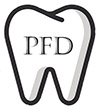
When it comes to biting down on certain types of food, the consequences can be disastrous for teeth. That’s because while teeth are pretty sturdy, they’re not indestructible, which means they can break.
Reasons for a Broken Tooth
Of course, chewing is not the only potential danger area when it comes to a broken tooth. Other factors may be related to cavities that could be present, clenching of teeth that occurs while a person is sleeping or some sort of trauma like an accident or collision.
The Need for Quick Treatment
There are different levels of severity in this situation, but regardless of what level of treatment is required, addressing the issue as quickly as possible is strongly recommended.
That’s because not only is a potentially unsightly appearance the end result of the situation, but if isn’t handled as soon as possible, the chance to permanently lose the tooth due to infection is a possibility. There may also be damage related to the nerve of the tooth.
A tooth break can usually be handled in a variety of ways, depending on how much damage has taken place. Some treatments include:
Veneers
Veneers are for damaged front teeth and involve two trips to the dentist. In this treatment, the dentist first removes a small bit of enamel from the surface of the tooth, before making an impression of the tooth. That impression will then help create the veneer.
During a second visit, the dentist applies a cement-like bond to the veneer, which is then placed on the broken tooth. The bond is then hardened.
Crowns
A crown or cap is a porcelain/ceramic material that covers all surfaces of the tooth and provides a protection to the tooth to prevent future fractures. A tooth is modified slightly by the dentist to allow room for the crown. After the lab makes a custom fitting crown it is cemented on permanently and treated just like a regular tooth.
Root Canals
In the worst cases, a tooth break will involve having the pulp exposed. The pulp is the nerve and blood vessels that are found inside the deep area of the tooth. Exposing the pulp can cause tooth pain, discoloration and sensitivity to hot or cold. Because there is so much bacteria naturally in the mouth exposed pulp will eventually lead to an infection.
In this case, the pulp can be removed and cleaned before being sealed. It’s been described as the equivalent of having a cavity filled, after the pulp is sealed the dentist typically places a crown covering the tooth in question for protection. This is also a situation in which multiple visits will be required
While a broken tooth sometimes can’t be avoided, avoiding such things as chewing on ice or other hard items is one step to take. In addition, making a conscious effort to not grind or clench teeth is another. And frequent visits to the dentist for cleanings and checkups is the best way to prevent broken teeth. Taking those small steps may help avoid both pain and added expense.
